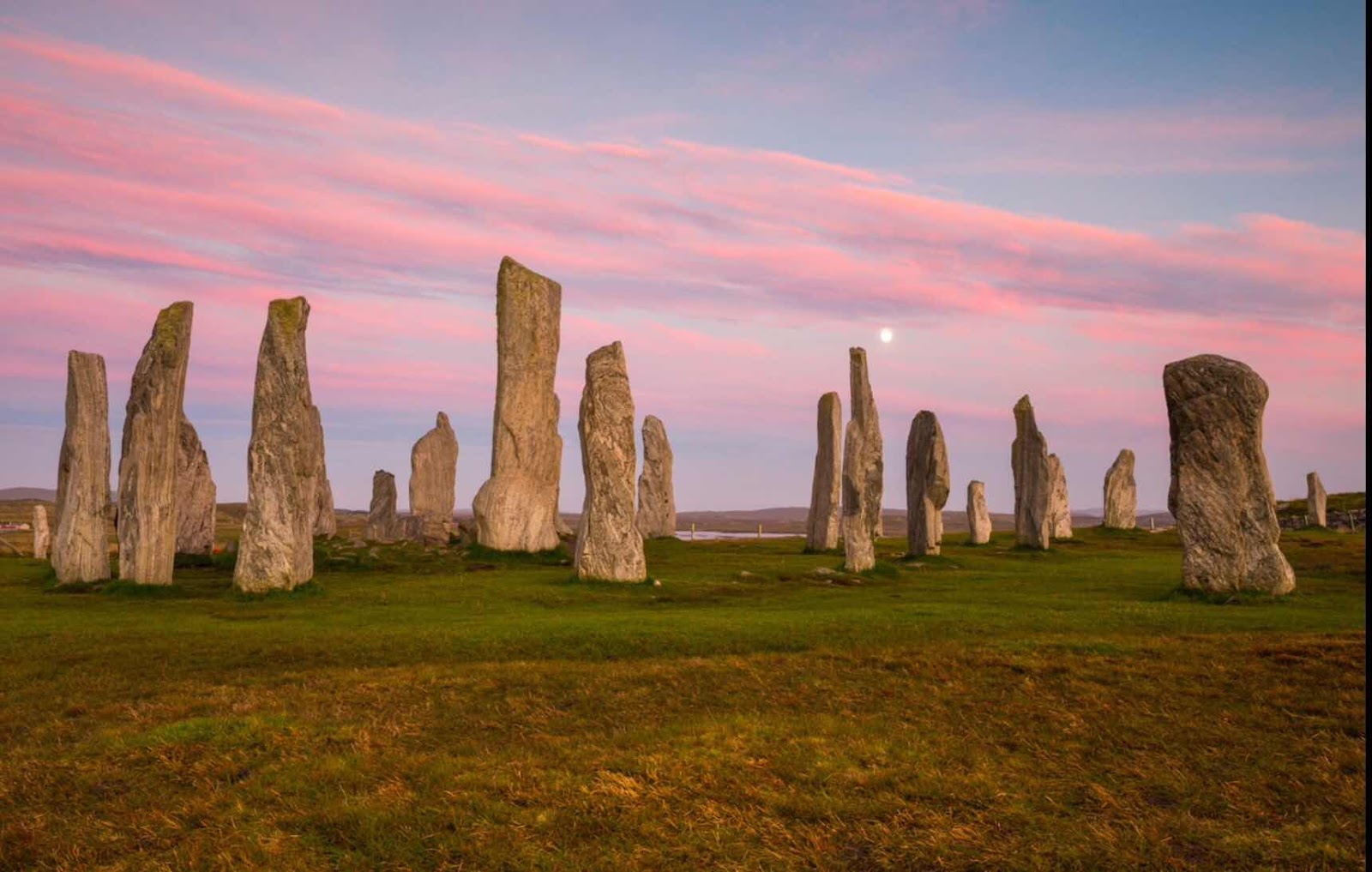So sorry about your weather!Hope the sun comes out soon.
Too bad it’s so misty.
So ran the comments on my Hebridean Facebook postings. How do I begin to express that the weather Jim and I experienced was part of our adventure, part of the lure of these remote isles and something for which we were and went totally prepared? If we had been looking for a sunny, palm-treed locale, we would never have journeyed to the Outer Hebrides.
Images of the wild skies of ever-changing weather patterns sweeping in off the North Atlantic, fleeting light patterns reflected on the tweedy coloured moors and rocky mountain ranges, varying coastline views of endless white beaches and dramatic jagged rocky cliffs under constant siege from roiling angry seas enchanted us both. The power of the Hebridean elements is surprisingly seductive.
The beauty, unique character and fascinating history of the Outer Hebrideans who survive and thrive added to the pure magic of the isles. Neolithic sites, remnants of the Clearances, the discovery of the Lewis Chessmen, blackhouses, the click-clatter of looms creating beautiful Harris Tweed patterns, crofting, fishing, the cutting and burning of peat as fuel, the annual guga hunt, the never forgotten Iolaire tragedy, a relatively new gin distillation industry, and the flourishing Gaelic language kept us enthralled and wanting more.

Nowhere in our travels have we experienced warmer, more helpful welcomes or such a solid sense of caring community. Driving the narrow, single lane roads often blocked with “sheep jams” 😂 proved at times challenging, but the ever-present wave to say thank you at passing places always made us smile. A police officer, diverting traffic because of an accident, recognized that we were visitors and thoughtfully took the time to show us on our map a shortcut route to our destination, saving us a lengthy loop back through Stornoway. The manager of the Gearrannan Blackhouses, when she heard that Jim and I were headed for the Butt of Lewis, took us aside and kindly warned us of the slippery grass at the cliff’s edge. The rock won’t give way, she warned, but the grass is slippery and you could slip over the edge in an instant. Needless to say, we heeded her advice. Such examples of thoughtfulness and caring were evident everywhere visited.
In an environment where most people know each other, Where are you from? was a constant question. Canada always elicited huge smiles and genuine interest. Despite their remote location, the majority of islanders we met were extremely well informed on national and world affairs.
We both confess that after the isolation and great sense of peace we enjoyed on Lewis and Harris, Jim and I found our return to a Scottish mainland of crowds, traffic, tourists, tourist busses and souvenir shop upon souvenir shop far more difficult than we had imagined. Culture shock perhaps. For the final few days of our trip, we merely went through the motions; missing the uniqueness of the isles’ experience, it was time to go home.
The Outer Hebrides, Life On The Edge, we discovered, can be quick to ensnare the heart. Jim appropriately uses the word magic. We will forever hold in our hearts the wild land, sea and sky, the vibrant history of which we knew so little before and most is all, the warmth of a unique, unforgettable and very special people.
Our lesson! It pays to get off that beaten tourist path.